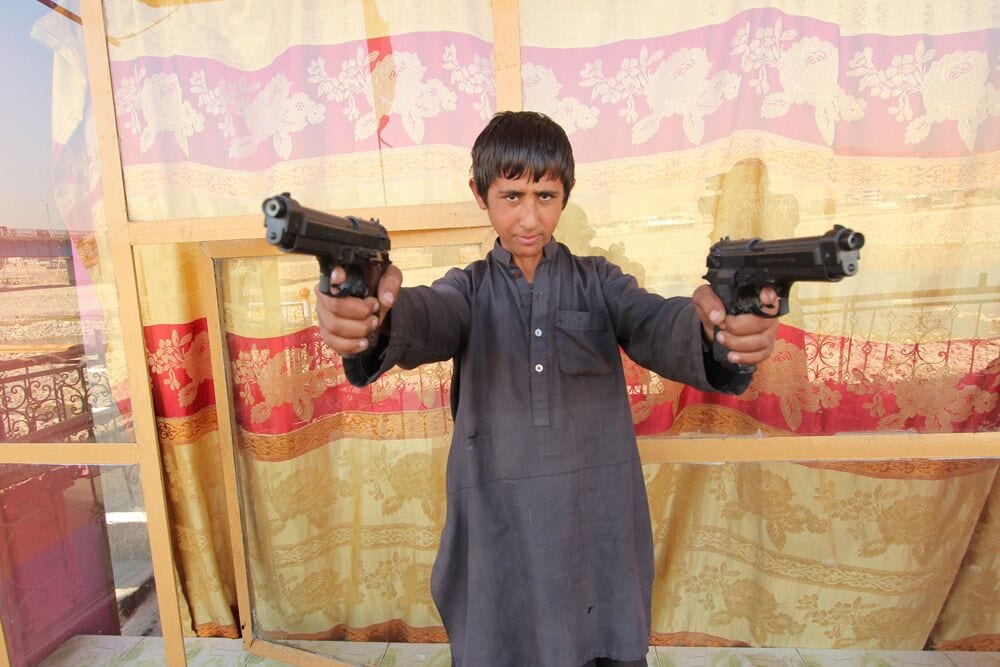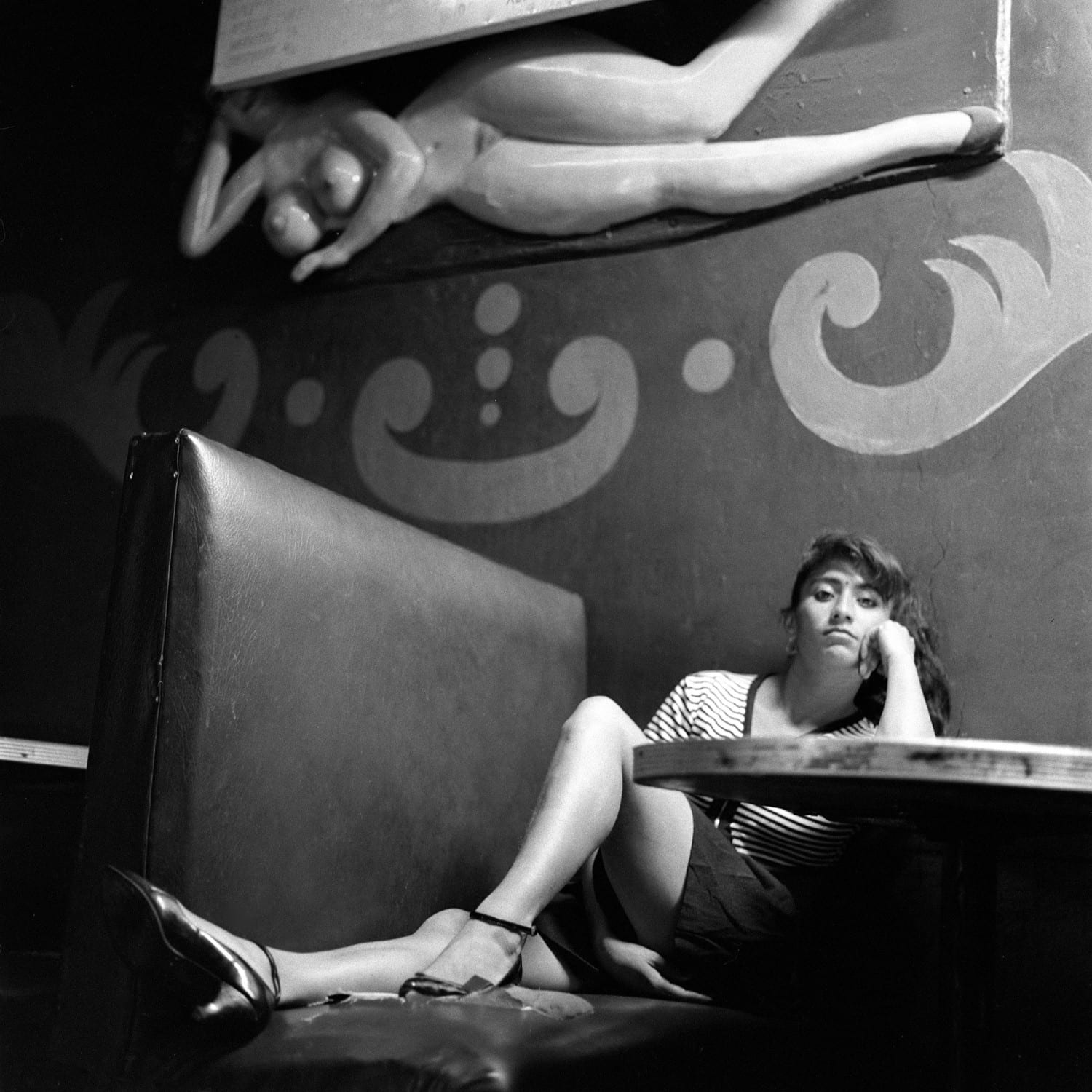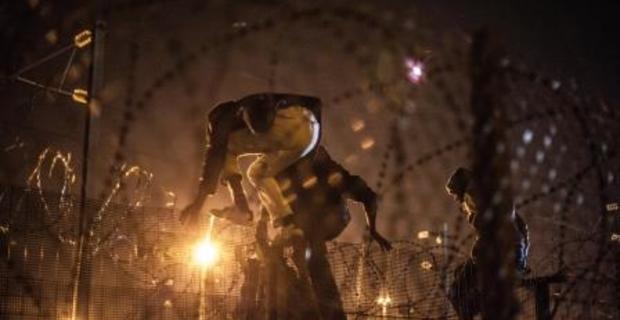“The rapid change, disruption and colossal upheaval in our world are mirrored in the programme,” the Doc/Fest said
“We continue to support filmmakers who strive to make an impact on a personal, local and global scale using the power of storytelling.”
International photographers have traditionally used Britain’s biggest documentary film festival to launch their more cinematic projects, but the 2016 edition of the Doc/Fest is significant for the sheer number of films inspired by, or made by, traditional stills photographers.
Here, BJP rounds up the best photography films to premiere at the festival, which launches tomorrow:
Snow Monkey – dir. George Gittoes

Veteran war photographer George Gittoes’ debut documentary, Snow Monkey (2016) is shot from the frontline of Taliban-controlled Jalabad. A veteran of conflicts in Rwanda, Somalia, Bosnia and Iraq, Gittoes first turned his attention to Afghanistan in 2011.
The title comes from the legions of street kids who sell ice cream amidst bombs and firefights, and whom often exhibit an inherited, knee-jerk support for the Taliban.
Gittoes established the Yellow House, a cultural centre to promote art, photography and filmmaking, documenting his struggle to engage with children who had never operated a camera, but were very familiar with weaponry.
And so, Gittoes street kids begin to photograph the things they saw in their daily lives, including the immediate aftermath of a local bombing, with bloodied bodies stumbling past the boy’s shaking camera. Be warned, it’s not the kind of film to be consumed with an ice cream.

Goded’s film follows five women who have worked in the sex industry for longer than they care to remember.
Observing and narrating their relationships over the course of two decades, the Mexican photographer has become a trusted confidante of many of these women, unpicking the stories of lives often defined by tragedy and pain, but who remain, despite everything, vivacious and warm, hopeful and unapologetically alive.
In 2009, Goded took an interest in video, and her first short film, Una Reina a Su Gusto, was shown in the Official Selection of the 2011 Morelia Film Festival.
The film is based out of the same shelter for women that became the subject of Bénédicte Desrus’ wonderful series Casa Xochiquetzal: Mujeres alegres previously written about for BJP.
Goded tells Indiewire about the genesis of the film: “I have been exploring [Mexico City’s] La Merced, [a public market famous for prostitution,] on and off for the last 23 years. The prostitutes and their world have been the main subjects of my photographs. I have also had the opportunity to meet men and women working in the sex trade in my travels to Mexico’s northern and southern borders.
“Of all the subjects I have photographed, the most controversial and the one that has moved me the most has to be the prostitutes who are getting on in years. They are true survivors. Carmen, the prostitute to whom I have dedicated two of my books, turned 68 this year. In January of 2012, I met up with her again and asked her to embark on this documentary project. She agreed, together with her closest friends and companions — two older than her and one younger — [as well as] her then-husband, Carlos, who invited himself into the project because he wanted his version of their love story included.”
Exodus: Breaking Into Europe – dir. Keo

A year ago, KEO films gave camera phones to 75 people attempting to break into Europe.The migrants filmed where regular crews could not: on dinghies from Turkey to Greece, in lorries entering Eurostar, or trucks crossing the Sahara.
The photographs and footage they took, spliced together, documents the many varied and complex experiences of people trying to reach the safety of Britain and other countries in Europe.
From families forced to flee war, to economic migrants searching for a more prosperous life, Exodus: Breaking Into Europe will feature the journeys of over 70 people filmed in 26 countries.
Soon to be lunched on the BBC after a premiere at Shef Doc/Fest, the series offers a unique insight into the largest period of migration in Europe since the Second World War.
Camera Person – dir. Kirsten Johnson
A photographer in her own right, Kirsten Johnson has spent the last 25 years working as a cinematographer for documentarians including Michael Moore and Laura Poitras. In her first documentary as director, Johnson refashions footage she shot on her myriad projects into a kaleidoscope musing on her profession.
In doing so, Johnson mediates on the complexities of putting real lives on film, the exploitative elements that are inherent and, in many respects, of documentary photography.
Talking to Indiewire about the project, Johnson says: “I went to Afghanistan in 2009 and was trying to make a film set in Afghanistan and I’d filmed with this young woman. And the fact that after 3 years of working together, she was too legitimately afraid to have her image in my film, it just raised all of these questions for me about promotion, complicity, access, what we do as filmmakers and how it’s changed in the world.
“Twenty-five years ago, it was different. You could promise someone that no one will ever see this movie in your town. No one will ever know. And now we live in a world where everyone in the world is imagining what might happen to them if they were filmed.”
Jim: The James Foley Story
The 2014 beheading of the American journalist James Foley at the hands of the newly emerged ISIS was the second the most publicised event since 9/11.
In this doc made by his childhood friend, Brian Oakes, Foley’s friends, family and colleagues try to resurrect the person behind the violent death – the image of which, with Foley staring straight into the camera, and the man who became known as Jihadi John lurking behind, was ran by every major news publication join the Wester world.
Instead, this film recalls Foley’s short but impactful life, recounting how, having survived being kidnapped in Libya, Foley soon insisted on traveling to Syria, with devastating consequences. He was kidknapped on Thanksgiving Day 2012.
The film also shows fellow hostages revealing never-before-heard details of his captivity with a chilling immediacy. Made with unparalleled access, Jim: The James Foley Story is a harrowing chronicle of one life caught in the fulcrum of America’s war with ISIS.
“I made this film to carry on the stories that Jim needed us to know,” says director Brian Oakes. “It’s important that we understand the significant role of today’s conflict journalists and why they risk their lives to tell the world how bad it can be.”
Ambulance
Ambulance is a raw, first-person account of the war that erupted in Gaza in July 2014.
Mohamed Jabaly, a young photojournalist from Gaza City, joins an ambulance crew as the war approaches. We experience the war through Mohamed’s eyes, watching directly from the passenger’s seat, trying both to document and help, directly, as the ambulance speed towards explosions.
Mohamed learns to rely on the captain and crew-mates responsible for the ambulance, who in turn supported Mohamed to make the film.
The ongoing conflict in the Occupied Territories is one of the oldest and most controversial in the world. The last war on Gaza in the summer of 2014 has been the most aggressive of the last six years. Few films have been made by directors within Gaza, showing their point of view on the war and their experiences of life under siege.
“The international media is saturated with ‘noise’ on the Israeli-Palestinian conflict, which makes it difficult for the wider public outside of the conflict, to relate to those affected by the violence and terror,” the filmmaking team who assisted Jabaly in the production of the film said in a statement.
“The film moves beyond reportage, allowing an international audience to connect with the filmmaker and his experience, as he risks his life to document the war from a civilian perspective – and whose life is transformed in the process.”
Doc/Fest takes place in Sheffield over 10-15 June 2016. For more information on Doc/Fest, see here.

